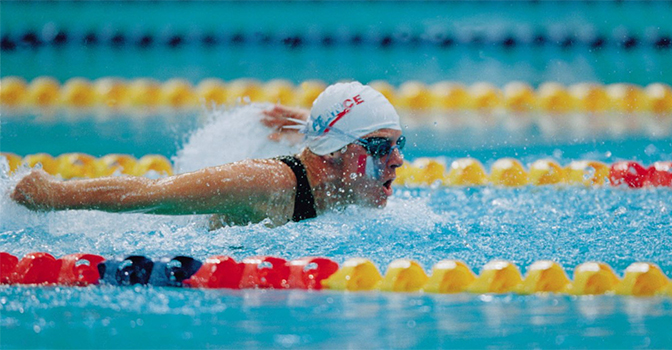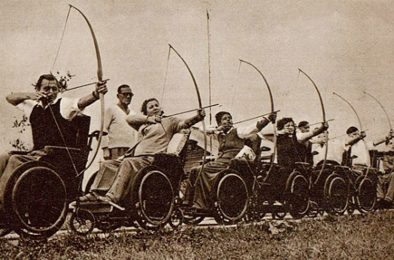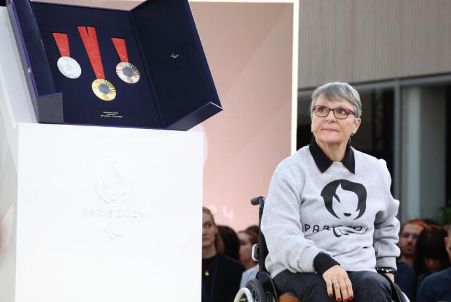Key points.
- First incarnation, the Stoke Mandeville Games were held in 1948 with wheelchair events in archery and javelin.
- The two newest sports to be given Paralympic status are badminton and taekwondo, which made their debut at the Tokyo 2020 Games.
- Paris 2024 Paralympic medals incorporate a piece of original iron from the Eiffel Tower, making them both symbolic and priceless.
As the 2024 Paris Paralympics approach, set to captivate audiences from 28 August to 8 September, it’s a perfect moment to reflect on the remarkable journey of the Paralympic Games.
From their humble beginnings as the Stoke Mandeville Games in 1948, created to support injured war veterans, to the grand international spectacle they are today, the Paralympics have grown into a symbol of resilience, inclusion and excellence.
The upcoming games in Paris promise not only thrilling athletic achievements but also a celebration of cultural heritage, with medals incorporating pieces of the Eiffel Tower.
Today at Leap in! HQ we explore the history and evolution of this iconic sporting competition.
First incarnation as the Stoke Mandeville Games.
The Stoke Mandeville Games, held in 1948, marked the first widely introduced, organised sporting event for athletes with disability. Featuring wheelchair events in archery and javelin, these games were groundbreaking in creating opportunities for injured war veterans and civilians.
Sport for athletes with disability has existed for more than 100 years however it wasn’t until after World War II that it was widely introduced.
In 1944, at the request of the British Government, Dr Ludwig Guttmann (a German-born neurologist and spinal injury pioneer) opened a spinal injuries centre at the Stoke Mandeville Hospital in Great Britain. The hospital encouraged adapted sports for therapeutic purposes. This slowly evolved towards sports for fun and then into competitive sport.
Stoke Mandeville Games.
It was Dr Guttmann’s idea to hold a competitive sporting event for patients and he decided to call it the Stoke Mandeville Games, which were first held during the opening ceremony of the 1948 London Olympic Games.
16 wheelchair athletes competed in these first games in archery and javelin. That day has gone down in history as the beginning of a sporting movement for people with disability and reduced mobility. There were limitations with the Stoke Mandeville Games as they were solely for people with spinal injuries and did not include other disability.
[Image: 16 wheelchair athletes competing in the first games in archery in the 1948 London Olympic Games.]
First Paralympic Games.
The first Paralympic Games took place during the Rome Olympics in 1960 with 400 paraplegic athletes from 23 countries. Since then, they have been held every four years, in the same year as the Olympic Games. In fact, the word Paralympic comes from the Greek preposition para (beside or alongside) and Olympic, meaning the two sporting events are held alongside each other.
Since the 1988 Seoul Olympic Games, the Paralympic Games have been held in the same cities and venues as the Olympics thanks to an agreement between the International Paralympic Committee (IPC) and the International Olympic Committee (IOC).
Growth of the Paralympic family.
In 1964, an organisation (International Sport Organisation for the Disabled or ISOD) was created to support athletes with disability who were not included in the Stoke Mandeville Games.
This organisation worked hard to include blind and low vision athletes as well as those who were amputees and with limb deficiency in the 1976 Toronto Paralympics and athletes with cerebral palsy in the 1980 Arnhem Paralympics. The goal was to include all types of disability in future games.
In 1982, the need for better coordination led to the formation of the International Coordinating Committee Sports for the Disabled in the World (ICC).
On 22 September 1989, the International Paralympic Committee was founded as an international, non-profit organisation in Düsseldorf, Germany, to act as the global governing body of the Paralympic Movement.
Paralympic sports.
There are currently 28 Paralympic sports sanctioned by the IPC: 22 summer and six winter. The two newest sports to be given Paralympic status are badminton and taekwondo, which made their debut at the Tokyo 2020 Games.
Summer sports.
Paris 2024: A celebration of sport and heritage.
The 2024 Paris Paralympics will feature 549 medal events across the 22 Para sports. About 4,400 athletes from around the world will compete in some of France’s most iconic locations, including the Chateau de Versailles and the foot of the Eiffel Tower.
French Para swimming legend Beatrice Hess, who has 20 Paralympic medals to her name, said: “I am happy that France is hosting the Paralympic Games for the first time. I hope that this will be a celebration of sport and that the Paralympic Games will have the place they deserve in the hearts and minds of the people.”
“The legacy of the Games is just as important as the Games,” Hess said. “For me, there should be, thanks to the Games, better access to sports for all,” she said, adding that she hopes more people in France will enjoy taking part in or watching Para sport after Paris 2024.
2024 Paralympic Games medals.
The Paris 2024 Paralympic Games medals embody French history and artistry. Each medal incorporates a piece of original iron from the Eiffel Tower, making them both symbolic and priceless.
The front of the medal features a graphic representation of the Eiffel Tower viewed from below. To allow athletes to distinguish their medals by touch, the gold, silver and bronze medals have distinct engravings and universal braille, honouring Louis Braille, the French inventor of the braille system.
The other side of the medal includes a hexagon-shaped piece of the original Eiffel Tower iron. Preserved during 20th-century renovations, these historical fragments now enrich the medals given to Paralympic athletes.
By winning a medal at the Paris 2024 Paralympics, athletes will be able to bring home a piece of the French landmark. This design celebrates France’s rich cultural heritage and honours athletic achievements.
In collaboration with French jeweller Chaumet, Paris 2024 aims to further strengthen the connection between sport, culture and heritage. Founded in 1780 and part of the LVMH group, Chaumet is the first jeweller to design Paralympic and Olympic medals.
[Image: Beatrice Hess at the unveiling of the Paris 2024 Paralympic medals]
The Paralympic legacy continues.
The story of the Paralympic Games is a testament to the power of sport to inspire and unite. As we look forward to the Paris 2024 Paralympics, we celebrate the incredible achievements of para-athletes and the enduring legacy of the Games.



